Motorsports
NASCAR Chicago Street Race Faces Backlash As Local Residents Speak Out
The NASCAR Chicago Street race is facing concerns from local residents ahead of its return for the third year of racing in the city in July. The Chicago Police met with local residents along with NASCAR representatives on Wednesday, according to a report from CBS News. One resident, Paul Wasserman, claimed, “It’s really tough on […]

The NASCAR Chicago Street race is facing concerns from local residents ahead of its return for the third year of racing in the city in July.
The Chicago Police met with local residents along with NASCAR representatives on Wednesday, according to a report from CBS News. One resident, Paul Wasserman, claimed, “It’s really tough on the neighborhood during NASCAR.
“Occasionally when there’s an event going on down here, you get like a bad day or maybe a bad night for like a Beyoncé concert [at Soldier Field] or something, but this is like that, but for however long NSACAR goes on.”
He added:
“I understand that we might have to live with it, but if it were elsewhere, I’d be happier.”

Meg Oliphant/Getty Images
Central (1st) District police Cmdr. David Harris responded to residents concerns, explaining:
“I understand it’s a lot of people live down here, and they’re not interested in their front yard being a party every weekend.”
NASCAR’s response
President of the NASCAR Chicago Street Race, Julie Giese commented:
“We have been working very hard to minimize those disruptions.”
Giese also addressed the amount of time NASCAR is in the city for, which is expected to be a total of 25 days of disruptions from setup to to clearing up the course. She added:
“We’re going to continue to get better at this,” Giese said.
NASCAR Chicago Street Race contract
NASCAR officials announced a three-year contract extension for the Chicago Street Race in 2023, which will see it’s agreement conclude at the end of the current season.
Steve O’Donnell, who recently took the role of NASCAR President, commented on the future of the event in December 2024. He explained, as previously reported by Newsweek Sports:
“For us, we’re just looking at 2025. It’ll be the third year of a three-year run, and each year we’ve wanted to build upon the momentum that we have.
“We’ve learned things each and every year — it’s our first street race, a lot of learnings came from that.”
He added:
“[There are] a number of folks who are interested at looking at NASCAR from a street race [perspective].
“We are certainly interested in California and the Southern California market, and that will continue to be a focus for us, but nothing to confirm at this point.”
Giese also responded to questions about the event’s future during the Wednesday meeting, to which she stated:
“Again, right now, our focus is on this year’s event. We have those option years. We’ll have those conversations.”
Motorsports
Jim France Tried To Fund NASCAR Team | Rockingham FOR SALE | More Horsepower THIS YEAR?
Rockingham is back on the market, NASCAR might finally give us the horsepower bump fans have been begging for, and Jim France nearly put one of his own drivers in a Cup race. That’s not speculation, that’s a fact. In just a few days, the landscape of the sport took a wild turn, and it’s […]

Rockingham is back on the market, NASCAR might finally give us the horsepower bump fans have been begging for, and Jim France nearly put one of his own drivers in a Cup race. That’s not speculation, that’s a fact. In just a few days, the landscape of the sport took a wild turn, and it’s only heating up.
- Rockingham Speedway is officially for sale just months after its big NASCAR return, so who’s buying?
- NASCAR is now leading the horsepower charge. 750 HP by the end of 2025? Yes, that’s being seriously discussed.
- Goodyear’s tire strategy and horsepower changes could finally fix the short track problem, but will it be enough?
- NASCAR’s CEO Jim France tried to field a car through Spire at Sonoma. The backlash was loud and effective.

The idea that NASCAR might increase horsepower this year? That’s not just talk anymore. And the France family racing in their own series? That may have hit a wall, but don’t assume the idea is gone for good. The tension between competition and control is very real, and what happens next could define the future of the sport. Catch the full breakdown, get the latest updates, and join the conversation. Don’t miss tonight’s stream either, live at 8 PM Eastern.
Watch Also:
Motorsports
Milk and Motorsports: Dairy’s Lasting Legacy in the Indy 500
DEEPENING THE CONNECTION … Purdue University brings cows to the Fastest Rookie Luncheon PUBLISHED ON May 29, 2025 “The month of May is a wonderful time to remind people of where their food comes from, as well as appreciate the labor required to harvest milk and the dairy cows that make milk and other dairy […]
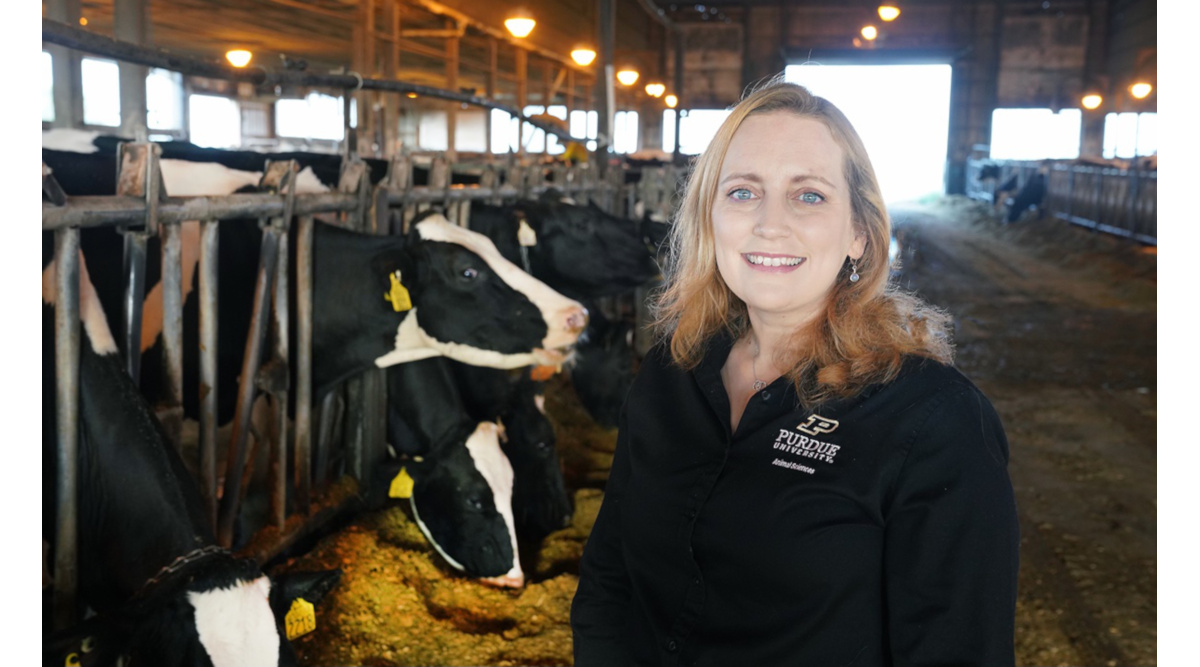
Purdue University brings cows to the Fastest Rookie Luncheon
“The month of May is a wonderful time to remind people of where their food comes from, as well as appreciate the labor required to harvest milk and the dairy cows that make milk and other dairy products possible,” said Jacquelyn Boerman, Purdue University associate professor of animal sciences.
INDIANAPOLIS — Sunday, Hoosiers and racing fans from across the country gathered to watch the iconic Indy 500 race—a race steeped in tradition, where winners famously celebrate with a bottle of milk. This tradition dates back to 1936 when Louis Meyer, the first three-time winner of the race, requested a glass of buttermilk after his victory.
“The racing community has really adopted this tradition and has tried to increase awareness of dairy around the Speedway,” said Jacquelyn Boerman, Purdue University associate professor of animal sciences. “Even though dairy, dairy farmers and milk production have evolved overtime, this tradition connects us back to tradition.”
Boerman explained that each year, a Hoosier dairy farmer has the honor of presenting the milk to the race winner, symbolizing the strong connection between agriculture and the Indy 500. Purdue University also plays a role in deepening that connection by bringing cows to the Fastest Rookie Luncheon. There, rookie drivers can interact with and milk cows — an experience that introduces them to Indiana’s agricultural roots.
“We try to ingrain that connection so that when drivers get a glass of milk at the end, they’ll have a better understanding of the history and importance of dairy, not only in Indiana but across the U.S,” said Boerman.
Organizations like the Indiana Dairy Producers Association and the American Dairy Association of Indiana also help keep the dairy industry top-of-mind. These groups bring together farmers from diverse backgrounds, offering a mix of perspectives and experiences that help shape the future of dairy in the state.
Purdue works closely with industry groups and local dairy farmers to develop research, Extension programs and outreach efforts that directly address real-world needs. This cooperative approach gives farmers a voice and helps ensure that their evolving challenges are met with practical solutions.
The state is also seeing some smaller farms invest in on-farm processing, allowing producers to maintain a smaller herd while directly engaging with their communities. At the same time, other farms are adopting cutting-edge technologies, from robotic milking systems to health-monitoring tools, ensuring animal welfare and operational efficiency.
“We’re trying to make Indiana a place where regardless of what your dairy farm looks like, your dairy can thrive,” said Boerman.
In her role at Purdue, Boerman teaches dairy science courses, some of which involve taking students to farms across the country, starting with farms in Indiana. These experiences help connect consumers with the people who produce their food.
“The month of May is a wonderful time to remind people of where their food comes from, as well as appreciate the labor required to harvest milk and the dairy cows that make milk and other dairy products possible,” Boerman said.
— Devyn Raver, Purdue University College of Agriculture
Motorsports
Briefly: Garner primary sponsor for Justin Haley’s car in 2 NASCAR races
Garner Trucking, the official transportation partner of Spire Motorsports since 2023, will serve as Justin Haley’s primary sponsor in back-to-back NASCAR Cup Series races beginning with Sunday’s Cracker Barrel 400 at Nashville Superspeedway. The Garner Trucking livery will return to the primary position aboard Haley’s No. 7 Chevrolet ZL1 the following weekend for the FireKeepers […]

Garner Trucking, the official transportation partner of Spire Motorsports since 2023, will serve as Justin Haley’s primary sponsor in back-to-back NASCAR Cup Series races beginning with Sunday’s Cracker Barrel 400 at Nashville Superspeedway.
The Garner Trucking livery will return to the primary position aboard Haley’s No. 7 Chevrolet ZL1 the following weekend for the FireKeepers 400 at Michigan International Speedway.
Garner Trucking is celebrating its 65th anniversary in 2025 and provides Spire Motorsports with the semi tractors the team utilizes to transport its equipment across the country.
“The Garner/Spire collaboration has been a highlight of our 65 years in business,” said Sherri Garner Brumbaugh, president, CEO and owner of Garner Trucking, Inc. “Vern Garner, our founder, was a huge NASCAR fan. My dad would have enjoyed the thrill of sending our truck drivers as VIP’s to the races and seeing Garner on a premiere NASCAR Cup Series car.”
Texas Trucking Association awards scholarships
The Texas Trucking Association (TXTA) Foundation recently awarded 31academic scholarships for the 2025-2026 school year totaling $115,000 to deserving students across the country — all affiliated with TXTA member companies.
The foundation also funded scholarships for six trade and technical applicants pursuing a career in the trucking industry totaling $15,000. Since 1991, TXTA Foundation has given more than $2.6 million in scholarship funds, helping students achieve their education and vocational dreams.
“Each year, it’s an honor to support the bright minds shaping the future through our scholarship program,” said TXTA Foundation Chairman John Craddock. “I am particularly excited that the Foundation has partnered with CDL and diesel tech training programs across the state to offer even more opportunities for our trade and technical scholarship recipients.”
As part of this new partnership, the Foundation has added Amarillo College, Angelina College, ATDS Truck Driving School, Del Mar College, Houston Community College, Laredo College, SAGE Truck Driving School – San Antonio, Texas State Technical College and Vernon College to its network of schools for trade and technical scholarships. Trade and technical college scholarships are open year-round.
ICYMI
Driver Poll: Do you use Rumble?
2 I-75 rest areas in southern Ohio to close for a year to be replaced
38% of inspected trucks placed out of service in west Texas oil patch
Motorsports
Motorsports And Golf Gearheads Unite As Pennzoil And PXG Team Up
Scott McLaughlin, left, NTT INDYCAR SERIES driver, and Jake Knapp, right, PGA TOUR winner, compete … More in a driving challenge using a limited-edition Pennzoil PXG golf driver at Brickyard Crossing Golf Course in Indianapolis on May 19, 2025. (Kaiti Sullivan/AP Content Services for Pennzoil) AP Content Services for Pennzoil At first blush, motor oil […]
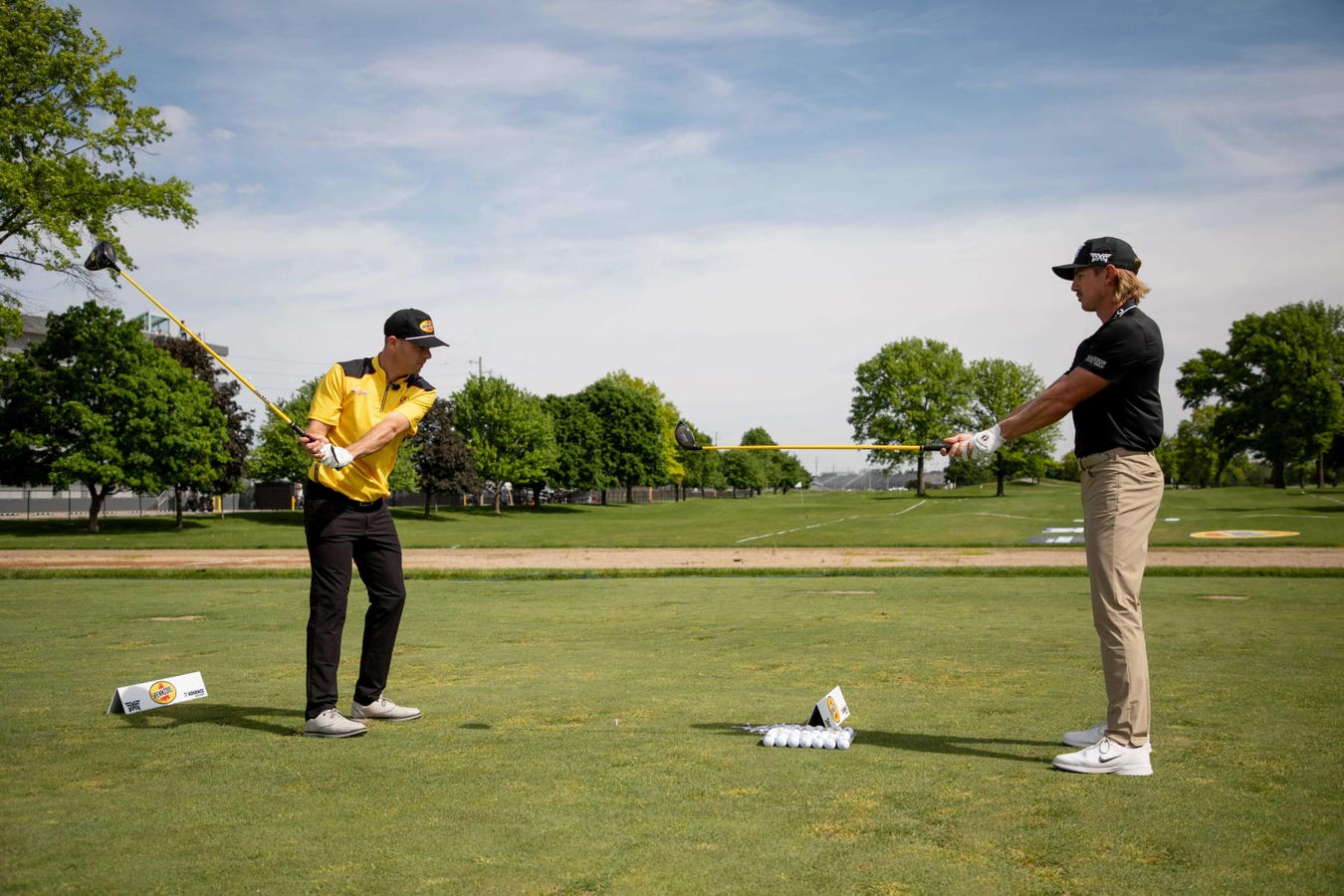
Scott McLaughlin, left, NTT INDYCAR SERIES driver, and Jake Knapp, right, PGA TOUR winner, compete … More
AP Content Services for Pennzoil
At first blush, motor oil and golf equipment may seem like strange bedfellows. But while one tunes engines and the other fine-tunes swings, both Pennzoil and PXG are in the performance game, laser focused on maxing power and pushing driving to the limit.
The pairing made instant sense to PGA tour pro and PXG staffer Jake Knapp, a Costa Mesa native known for a mullet flow as wild as his bumpy road to the top circuit.
“Between Pennzoil and PXG you have two top-tier companies and they both obviously have to do with driving. I thought it was a cool collab and when I finally saw the black and yellow driver I thought it worked really well,” Knapp quipped, adding that the ‘Long way me drive’ tagline etched on the sweetspot was a clever touch.
To tee off the promotion of the limited-edition big stick born from the collaboration, Team Penske’s Scott McLaughlin and Knapp went head-to-head in a friendly long drive contest at Brickyard Crossing Golf Course—a unique layout with several holes set right inside the infield of the Indianapolis Motor Speedway.
Knapp had a blast and said it was fun to find out how big of a “golf geek” that the New Zealander IndyCar Series driver turned out to be.
“He seems to love golf and plays during race weeks a bunch. It was fun to chitchat with him about golf and then also learn a bit about what he does on a week-to-week basis.”
Knapp, who turns 31 in a few days, spent years grinding on the mini tours before finally breaking through and his path was anything but linear. After falling short at Q-School in 2021 and losing his status, he took an eight-month detour working as a nightclub bouncer to bankroll another run at the dream. Three years later, he was hoisting a trophy as a PGA Tour winner at the Mexico Open.
His stint managing late-night lines and defusing tense situations didn’t just help him stay afloat financially—it also gave him clarifying perspective that still serves him well on the course today.
“I think there’s definitely been a benefit. Hopefully I don’t have to deal with crowds, I leave that up to tour security,” he joked. “But I think it helped me more so in the overall aspect of having an appreciation for being able to play golf for a living. The money we can make in golf and the opportunities we have are far greater than checking IDs at a door at midnight”
Tee Box Speed Demon
This season, Knapp boasts one of the fastest swings on tour, averaging a clubhead speed of 123.54 mph. That outpaces stars like Rory McIlroy and Xander Schauffele.
Knapp attributes his blur of a tee shot simply to a lot of time working out and an early knack for hitting bombs even before he had his teenaged growth spurt
“I was fortunate enough to hit it far as a kid when I wasn’t very tall. Then I grew maybe five or six inches and that helped. But it was a lot of time spent in the gym training and working on it. Speed is a skill kind of like anything in our game,” he said.
Maybe it helped that one of Knapp’s old pastimes was speedcubing, he used to be able to solve a Rubik’s cube faster than it takes most players to read a putt.
“Realistically, nowadays I can do it in 90 seconds but when I used to do it a lot it was right around a minute or so.”
In motorsports, multi person crews tweak cars in mere seconds in the thick of a race. If golf allowed pitstop-style crews to rush onto the course mid-round to tweak golf clubs, Knapp believes such adjustments could be a meaningful difference maker.
“It wouldn’t be too bad if you were playing a particular course where you have to draw or fade the ball on certain holes. I think on Quail Hollow No. 2, for the PGA Championship I would have loved if somebody could have come in and given me a driver that was going to hook about 30-yards. That would be very nice to have maybe once or twice a round.”
Keeping with the racing theme, Knapp’s dream car is a coupe famous for defying physics in its appearances as Paul Walker’s go-to ride in the long running street racing franchise.
“I personally always loved an old school souped-up Nissan GT-R for whatever reason, growing up in the Fast and Furious era. I would love to drive something like that down Pacific Coast Highway. I’d be all in on that.”
Knappster Vibes
The UCLA product, currently 57th in the FedEx Cup standings, may look like a poster boy for SiriusXM’s new country station The Highway but his musical tastes run more bass drop than banjo.
“Sometime in the morning if I need to get myself going I’ll listen to some type of hip hop or electronic music. But then usually before afternoon rounds when I’m already worked out and gone through my day I listen more to white noise or meditation sounds—waves crashing, things like that to help slow everything down.”
His top golf goals for the balance of the season are to compete in one or both of the remaining two majors and to make a push, with some high leaderboard finishes, onto Keegan Bradley’s radar to garner captain’s pick consideration for team USA.
“They like guys that are playing well right now so I’m going to do my best to prove that over the next few months and hopefully I’ll be playing later this summer in the Ryder Cup.”
A big puckhead, while his Anaheim Ducks, who are also a sponsor, didn’t make the playoffs this year, he’s bullish on their future prospects.
“I think we have most of the pieces, but maybe one more true goal scorer and one or two big mature defensemen. But for the most part we have most of the pieces, it’s just a matter of letting those guys mature, get better and build that team chemistry. I think in a year or two we are going to be in a really good spot.”
Knapp’s journey, like the Anaheim Ducks team he pulls for, is a work in progress but trending up and he certainly has the horsepower to hit serious paydirt in the sport.
Motorsports
How Nashville 2024 changed the entire NASCAR Cup season
In 2024, the Nashville race weekend was the 19th race of the season, and when NASCAR took on ‘Music City,’ it ended up being one of the most consequential races of the year. Denny Hamlin was about half-a-lap away from taking the white flag and ensuring he would win the Cup race at Nashville, with […]
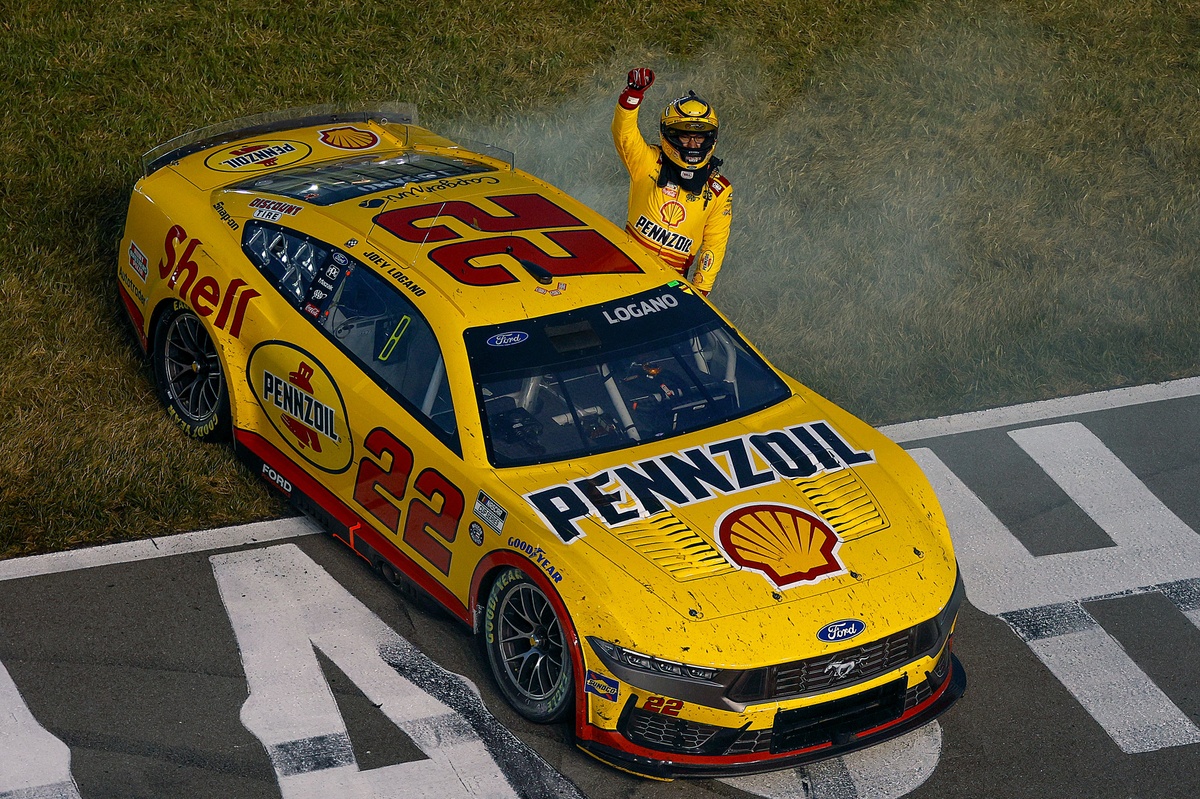
In 2024, the Nashville race weekend was the 19th race of the season, and when NASCAR took on ‘Music City,’ it ended up being one of the most consequential races of the year.
Denny Hamlin was about half-a-lap away from taking the white flag and ensuring he would win the Cup race at Nashville, with Ross Chastain a close second. Joey Logano, who was winless so far that season, ran 14th.
But when Austin Cindric lost control while battling Noah Gragson for 21st, it triggered one of the most chaotic finishes of the year. The unbelievable sequence events that followed ultimately decided not just the race winner, but who would become the 2024 NASCAR Cup Series champion … and remember, Nashville wasn’t even a playoff race!
Overtime restart #1

Overtime restart
Photo by: Sean Gardner / Getty Images
Fuel was tight and while some cars chose to pit during the first yellow, the leaders gambled and stayed out for the two-lap dash. Kyle Larson tried to move Hamlin for the race lead, but missed and hit the apron before shooting up the track and taking out fellow Chevrolet driver Chastain. A handful of cars were collected in the ensuing chaos. Hamlin was still in control of the race while Logano now ran fourth.
Overtime restart #2
There was a bit of a stack-up at the front of the field, but a wreck was avoided as one car in the back slid through the grass. Hamlin escaped with the lead again, only for another wreck to break out mid-pack. Harrison Burton bobbled in the middle of the field and several cars went spinning and crashing at the exit of Turn 2.
Overtime restart #3

Kyle Busch, Richard Childress Racing Chevrolet
Photo by: Sean Gardner / Getty Images
Fuel was now a real concern but no one wanted to give up the track position. As the green flag flew, Larson’s car stalled out and the stack-up that followed sent Kyle Busch into the outside wall. He was running inside the top five before that and also searching for his first win of the year. The veteran driver climbed from his car and just threw his hands up in disappointment.
Overtime restart #4
Logano was now running third to the Toyotas of Martin Truex Jr. and Hamlin, but neither wanted to risk another restart while running on fumes. Both Joe Gibbs Racing drivers pitted, giving the lead to Logano. On the restart, Chase Elliott in sixth ran out of fuel, just as his Hendrick Motorsports teammate Larson did on the restart prior, Thankfully, everyone avoided him this time around. Chase Briscoe nosed ahead in the battle for the win, taking the lead from Logano for a moment before he snatched it back at the exit of Turn 4.
With the white flag flying, he was ready to finally claim vict… — and we had another caution.Josh Berry had wrecked and was stopped in the infield.
Overtime restart #5

Joey Logano, Team Penske Ford
Photo by: James Gilbert / Getty Images
Nashville 2024 still stands as the most overtime restarts in NASCAR Cup Series history.
This fifth restart would (thankfully) be the last, as Logano got a great pull, with some unique names behind him, but it was Tyler Reddick (who had pitted) that was going to be the real threat. He surged up to second and was all over Logano, but the Penske driver blocked him high. This allowed Zane Smith to have clean air on the bottom and the rookie driver nearly pulled off a stunning upset as he snatched second away and nearly reached Logano’s back bumper. But it was not quite enough as Logano crossed the line and won the race, finally ending the event.
The top ten when the first caution flew for Cindric was as follows: Hamlin, Chastain, Larson, Busch, Gibbs, Wallace, Truex, Reddick, Buescher, Haley.
At the checkered flag, this was the new top ten: Logano, Smith, Reddick, Preece, Buescher, Blaney, Wallace, Larson, Hemric, Gragson.
The event ran 31 laps beyond the scheduled distance.
Why this race mattered so much
Unless you watch NASCAR every week, you’re likely wondering why this chaotic finish so important. Well, Logano was winless throughout the entire regular season, with the exception of this one race. Without that single victory, he wouldn’t have made the playoffs at all.
And as fate would have it, Logano marched through each round of the playoffs, even getting eliminated at one point (before a post-race technical infraction for Alex Bowman put him back in), ultimately reaching the Championship 4. Once there, the veteran driver dominated the race and collected his third Cup Series championship, beating teammate Ryan Blaney. And without that simple spin from his other teammate [Cindric] in the summer of that year, none of this would have ever happened.
That right there is why winning is so important in modern NASCAR. One crazy race opened the door for Logano, who had an average finish of 17.1, and he used that opportunity to launch himself all the way to the championship.
In this article
Be the first to know and subscribe for real-time news email updates on these topics
Motorsports
One Lap of America Keeps Cannon Ball Baker’s Legacy Going Strong
Without Erwin George “Cannon Ball” Baker, it’s likely that nothing in the rest of this story would have ever happened. Baker, who passed away in 1960 at the age of 78, defied the odds by dying of a heart attack instead of crashing a motorcycle or a car while participating in one of the 130-odd […]
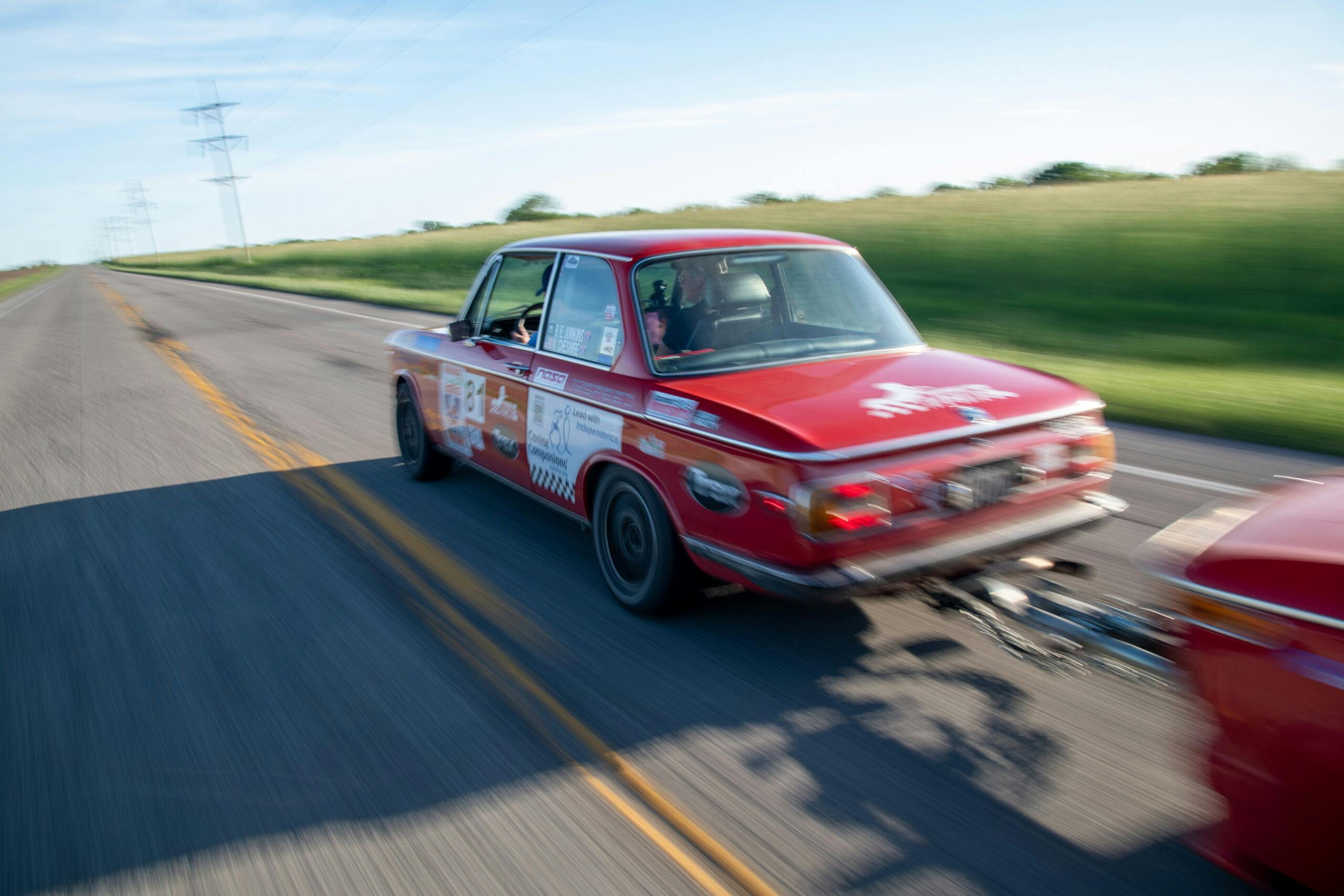
Without Erwin George “Cannon Ball” Baker, it’s likely that nothing in the rest of this story would have ever happened. Baker, who passed away in 1960 at the age of 78, defied the odds by dying of a heart attack instead of crashing a motorcycle or a car while participating in one of the 130-odd mad dashes he made from one side of America to the other, the first occurring in 1914 when he rode an Indian motorcycle coast-to-coast in 11 days. He backed that up a year later by driving a Stutz Bearcat cross-country, which also took 11 days.
Baker lived to set records, 143 of them, like the time he drove a Buick two-ton truck—loaded down with gallons of water from the Atlantic Ocean—to the Pacific Ocean in five days, 17 hours and 30 minutes. In 1933, he drove a Graham-Paige from New York City to Los Angeles in just over 53 hours, setting a record that stood for 31 years. The Indianapolis News once referred to him as, “Here-He-Comes-There-He-Goes Baker.”
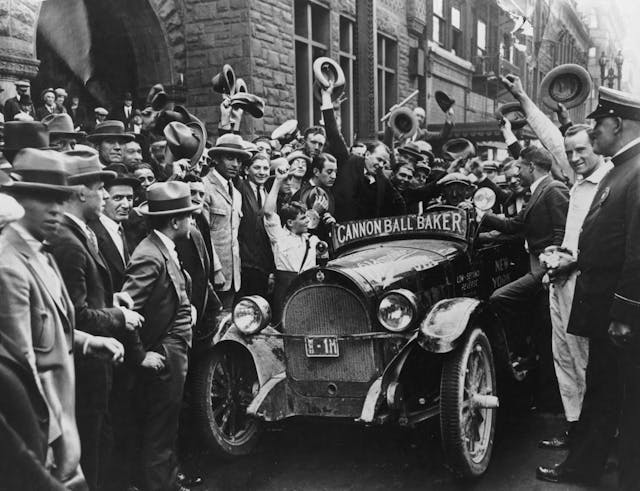
Sponsors loved Cannon Ball Baker, which is how he signed his name; he even copyrighted it, and Cannon Ball is what his tombstone reads at Crown Hill Cemetery in Indianapolis, lot 150, section 60. A 1929 Mobil Oil ad featured four men who were stellar examples of making possible “achievement through quality:” Pioneer aviators Charles Lindbergh and the Wright brothers, and Cannon Ball Baker. He was that famous.
No wonder Cannon Ball became a genuine folk hero to automotive journalist Brock Yates, who wrote 15 books but is perhaps best known for his work at Car and Driver magazine, a relationship that spanned 42 years. After Yates and a C&D editor named Steve Smith (not me—I’d figure into this story later) envisioned a Baker-style, modern-day cross-country dash, it was fittingly dubbed “The Cannonball Baker Sea-to-Shining-Sea Memorial Trophy Dash,” or just Cannonball for short.

Ostensibly, it was in protest of the national 55-mph speed limit, enacted to help save gasoline during the current gas crisis, which, no question, Yates hated. But part of his motivation, some suspect, was to just see what would happen.
Yates and his son, Brock Jr., age 14, along with Smith and family friend Jim Williams, made the first crossing alone, as a test, leaving from the now-famous Red Ball Garage in Manhattan on May 3, 1971, headed to the racer-friendly Portofino Inn in Redondo Beach, California, a distance of about 2900 miles, depending on your route. They were driving a much-modified 1971 Dodge Tradesman van, nicknamed Moon Trash II.
They made it in 40 hours, 51 minutes, considerably faster than any of Cannon Ball Baker’s runs, but the quartet in the Dodge van had something Cannon Ball never did: The interstate highway system.
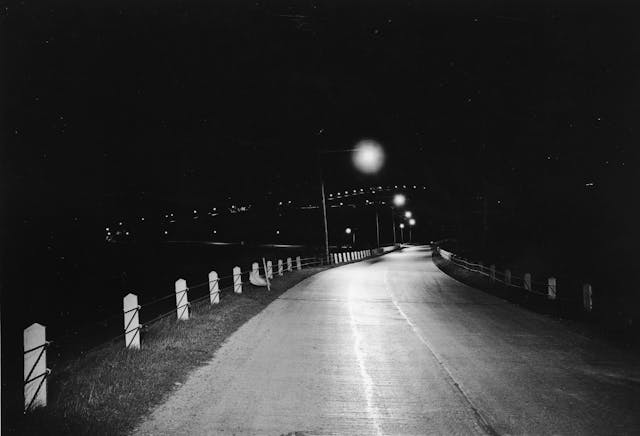
Satisfied by his sample, Yates and crew quietly laid out plans for an all-out assault on the federally mandated speed laws and the cross-country record, along with seven other teams that wanted in on the action. The first official, competitive Cannonball Run left the Red Ball Garage on November 15, 1971. The winning car rolled into the Portofino parking lot 35 hours and 41 minutes later: It was racing legend Dan Gurney, accompanied by Yates, driving a borrowed Ferrari Daytona. Tongue in cheek, Gurney said that at “no time did we exceed 175 mph.”
Yates said there would be another Cannonball Run, and there was: In fact, there were four in all. The second one was held November 13, 1972; the third on April 23, 1975, and the last one on April 1, 1979.
One of the Cannonball entries was Hal Needam, a top Hollywood stuntman who wanted to produce and direct movies, and he and Yates partnered to make multiple films that drew loosely on their experience with super-legal interstate travel at maximum speeds. First came Smokey and the Bandit (1977), quickly followed by Smokey and the Bandit II in 1980, both starring Burt Reynolds, who, at the time, was allowing Needham to stay in his guest house.
Then, in 1981, they finally made the first Cannonball Run movie. Needham directed it and Yates wrote it, but if you mentioned that to Brock, you’d get an earful about how he envisioned it as a more serious effort, starring auto racing enthusiast Steve McQueen, who was interested. But the Bullitt star was diagnosed with cancer and died at age 50 in 1980.
“Then Reynolds got hold of it, and turned it around completely,” Yates said. He was a little embarrassed about how the Cannonball Run movie turned into a slapstick farce, but he cashed the check. Made on a budget of $18 million, the film made $72 million in its first year, big money back then, and has since grossed $160 million. Film critic Roger Ebert gave Cannonball Run one-half of a star out of a possible four, and the less said about the two Cannonball sequels, the better.
Still, the movies made the Cannonball Run internationally famous, and interest from autocentric fans who wanted to compete in an actual Cannonball Run was at fever pitch. Yates knew the time had passed for the true Cannonball, so he conceived—and thanks for waiting for me to get around to this—One Lap of America, theoretically a more sedate event that had competitors driving around the U.S. from racetrack to racetrack, with timed stages in-between that could be accomplished, Yates promised, at a legal 55 mph.
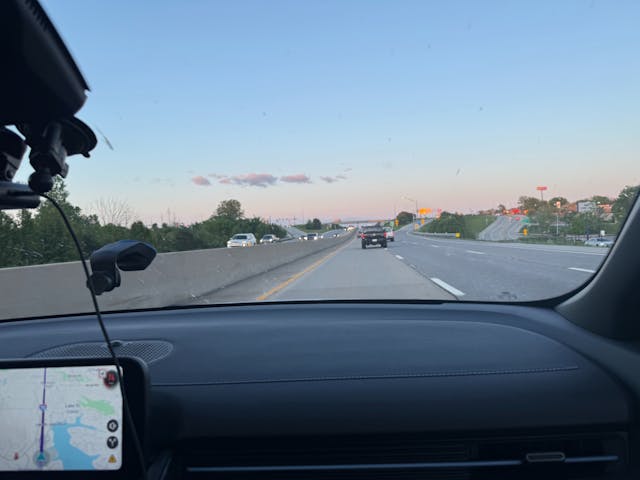
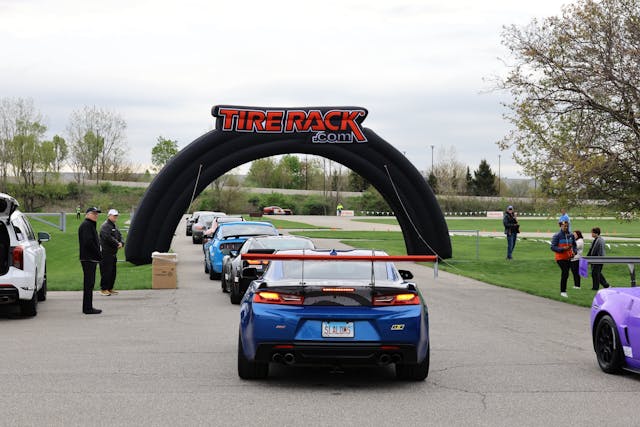

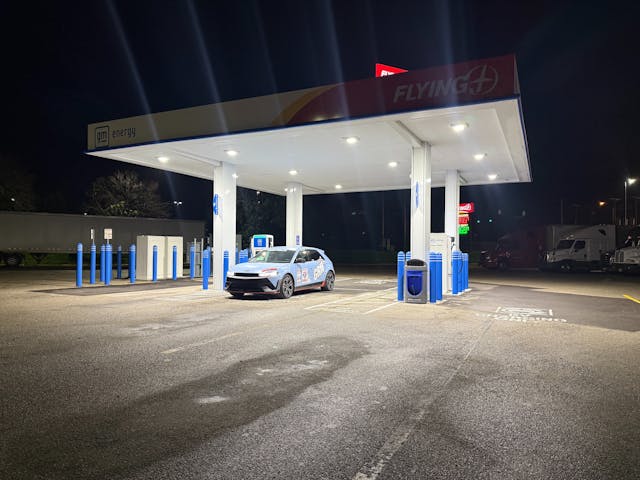
The first One Lap launched in 1984, an unorganized, fledgling effort that had competitors try to match exactly the mileage Yates himself laid down when he pre-drove the route. Not knowing exactly what roads Yates took, where he stopped for dinner, where he got lost, made it a guessing game. Some 76 teams were on the entry list in ’84, ranging from a Cadillac Cimarron, to a Porsche 930 Turbo, to an Itasca motor home, to a Hertz unlimited-mileage rental car, to a 1959 Rolls-Royce Silver Wraith.
Yates promised the 1985 event would be bigger, better, and at least more organized, as a time/speed/distance rally with point-to-point timed stages which you must complete no faster and no slower than your written instructions say: You’d be penalized one point for every second you were either early or late. These surprise timed stages were done en route to a variety of racetracks, where performance there would count toward the overall and class wins, too. Yates toured the country promoting the 1985 Uniroyal One Lap of America, visiting newspapers in the largest cities. That’s how I met Yates, and when I asked him if a seat might be available for the event, he said he’d see.
Not long after, Yates had added me to a team of several Chrysler factory entries. The bad news: I’d be on a three-man team driving a then-brand-new Dodge minivan. The good news: A fellow Chrysler teammate, driving a Chrysler LeBaron GTS, was Phil Hill, the 1961 Formula 1 champion, who also won the 24 Hours of Le Mans, the 12 Hours of Sebring, and the 24 Hours of Daytona. A kind, humble, extremely smart man, and one of my heroes; the day before we were to start the One Lap in downtown Detroit, Hill asked if I would drive him around to several stores. In my Dodge minivan. I’ve never made a more self-conscious trip.
My driving partners, whom I’d never met, were Ben Farnsworth, a commentator for the CBS Radio Network in New York City, and Bob Burns, a student who would go on to lead Land Rover and Range Rover’s off-road programs. Burns and I became lifelong friends; Farnsworth, not so much. You spend 10 sleep-deprived days hermetically sealed in a minivan with strangers, and you have no idea whether everybody will get along.
For 1985, the entries had swelled to a barely manageable 78, with a long list of alternates who wished they’d applied earlier. Notable was a 1985 Audi Quattro, with rally pros Ty Holmquist and Nicole Ouimet, and Car and Driver writer Jean Jennings, who was then Jean Lindamood.
Rocky Aoki, the founder of Benihana restaurants, was in a vintage Rolls that was equipped with a microwave, so he could prepare “the delicious new Benihana frozen meals” on the road. In a later One Lap, Rocky showed up in a Porsche 911 limousine.
Another Audi Quattro Turbo held rally champion John Buffum and experienced navigator Tom Grimshaw. Racer Anatoly Arutunoff, who can’t stand to miss anything and will be referenced later, was in a Mazda RX-7. Marshall Schuon, the New York Times automotive columnist, was in a Plymouth Voyager. Rally master Gene Henderson was in a turbocharged Subaru. Female race car drivers Patty Moise, Robin McCall, and Margie Smith-Haas shared a Chevrolet Suburban. And the bravest entry had to be brothers George and Timothy Fallar, in a 1984 Harley-Davidson TriHawk three-wheeler.
It was miserable and wonderful. Our route began in Detroit—a much-publicized launch that safety advocate Ralph Nader, a longtime nemesis of Yates, threatened to block by lining up wheelchair-bound individuals who had been seriously injured in car crashes, and Nader would tell everyone who listened that he essentially expected one of us to T-bone a school bus full of nuns. It’s important to report that no nuns were hurt during the running of any One Lap.
Neither Nader nor his wheelchaired constituents showed, and we were flagged off, one minute apart, by drag racer Shirley Muldowney. Who was, incidentally, in a wheelchair, recuperating from an accident in Montreal after she crashed into a wall at 245 mph. The car disintegrated, and Muldowney ended up in a field, still strapped in her seat, far from the initial crash impact. It was more than 18 months before she got back in her dragster.
The route took us to Michigan’s Upper Peninsula, then back south and west through Montana, where we were the last vehicle allowed through on a just-closed interstate, due to a blizzard. More than half the field didn’t beat the closure and were stuck for hours at a truck stop. It was no picnic on that road, either; I was driving at beyond-maximum speed, in a minivan, unable to see the pavement. I began hallucinating by the end of the storm. From there, west to Oregon, then south to the Portofino Inn in Redondo Beach, California.
That was the only stop on the schedule in the 9000-mile trip. The only night we’d spend in a bed was at the Portofino. The next morning, it was south and then east, through the Big Bend in far south Texas, to New Orleans and through Bourbon Street, then on to Jacksonville, Florida.
Somewhere between New Orleans and Jacksonville, we were able to stop at a cheap by-the-hour motel, which is about how long we were there—just enough time for three showers.
Then it was north for a midnight drive through Manhattan, to the Watkins Glen road course, then west through Ohio, where the One Lappers were greeted by at least a hundred state troopers, some of whom would follow our cars—at 55 mph, of course—all the way to the border. Then back north to the finish, at Detroit’s Renaissance Center. A bed awaited, but first there was the One Lap Official Banquet, at which more people snored than ate. The winner, to no one’s surprise, was the Buffum/Grimshaw Audi. We were stunned and delighted to have finished 17th. I drove in several One Laps after that one, but the 1985 grind was the most memorable, and generally considered the toughest of all.
Brock Yates died at age 82 on October 5, 2016. Well before that, the responsibility for One Lap fell to Brock Yates, Jr., part of that original one-van entry in May of 1971 that, along with his dad and two friends, made that original cross-country drive to test the Cannonball theory. Brock Jr. was, in fact, a bartender at the Portofino Inn, where I first met him 40 years ago.
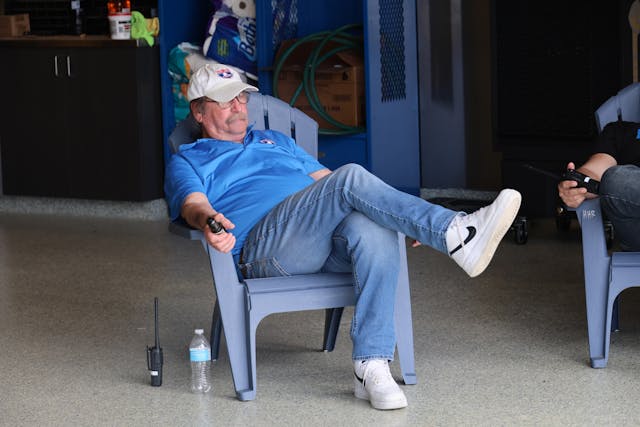
Now formally called the Tire Rack One Lap of America, the 2025 edition began at the massive Tire Rack headquarters in South Bend, Indiana, on May 3 and concluded at Tire Rack on May 10. In between, One Lap visited eight venues, including Gateway Motorsports Park just east of St. Louis; Virginia International Raceway; Pittsburgh International Race Complex; the little-known Hedge Hollow road course in southwest Missouri, and the NCM Motorsports Park in Bowling Green, Kentucky, owned by the National Corvette Museum and located next to the Corvette assembly plant.
Of the 41 One Laps, Brock Jr. has been on 38 of them, first as a competitor, and then running the show, starting with the 2009 One Lap. Over the years, One Lap has dialed it down from the one-night-in-a-motel frantic dash it was in 1985 to a targeted maximum distance of about 3500 miles done over eight days, with an opportunity to get some sleep every evening.

It’s a formula that works. This year, 83 cars were entered—85 is the maximum allowed—and the list included a bunch of Corvettes and Porsches, but also a 1963 American Motors Rambler Ambassador (there’s a Vintage class), and a 2017 Ford Focus (it competed in the Mid-Priced class). The entry fee per car is $4000, with lots of that going towards track rental—it’s much more expensive now than it used to be, Yates says—and administrative costs, including insurance. There’s also a charity aspect: Brock Sr. died after a 14-year battle with Alzheimer’s, and to date, One Lap has raised over $200,000 for the Alzheimer’s Association.
The experience level of the competitors varies dramatically—this year’s field included professional racers Randy Pobst and Ross Bentley—but the vast majority are amateurs. Brock Jr., a performance driving instructor himself, requires competitors to have completed at least two driving schools.
While many participants return year after year, there’s always a healthy batch of first-timers like Justin Schuh, 45, an experienced amateur racer from Loveland, Colorado, driving a 2019 Camaro ZL1 with the track-focused 1LE package, owned by his driving partner, Hsun Chen. The car is powered by a supercharged 6.2-liter V-8, pumping out 650 horsepower.
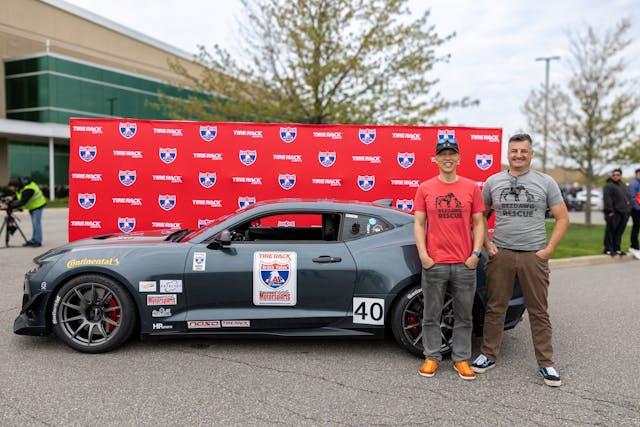
Or at least it was supposed to. Chen had only owned the car for six weeks, and it wasn’t fully sorted. On the racetracks, Schuh noted that the Camaro ZL1 did fine on the corners, but it was slow on the straights. There was another Camaro ZL1 in the field, “and the driver of that car mentioned that he’d hit 161 mph on the straight at VIR, and we thought, ‘That’s 20 mph faster than us. Something is wrong with our car.’”
While Schuh drove to the next track, Chen began Googling all the potential problems. One likely culprit: The air-to-water intercooler. Indeed, “Half of the intercooler coolant had bled out of it through its six-year life of basically doing nothing, and we had about half the horsepower we should have had up until the last three events,” Schuh says. They discovered that it wasn’t a big deal: “Top it off and burp it, using a screwdriver, a funnel, bottled water, and duct tape. Near Beaver Run. Or Pittsburgh. Someplace. And suddenly we had the top speed that we were supposed to have had all week long. The car was transformed.” The closing event was the wet skid pad at Tire Rack, and Schuh won it.
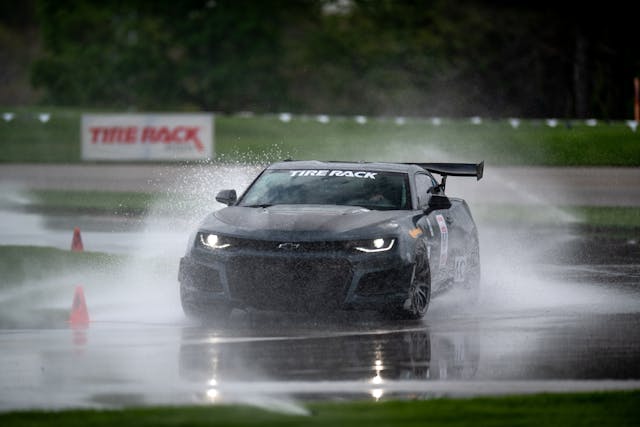
So what drew him to One Lap? “It had always been on my bucket list,” Schuh says. “I looked at the route, and I’d been to a couple of the tracks, and I asked my wife if it was OK for me to disappear for nine days. Maybe 10. And she said, ‘You’ve talked about this before—you’d be silly not to do it.’ So I did.”
But would he do it again? As is common with One Lap participants, right after the event was over, Schuh thought, “Never again. Not for me. It’s a pretty brutal event as far as sleep goes. But as I began talking to some friends, telling stories about it and all the good times we had—with the right car and the right co-driver, I think I’d do it again. You have stories to tell for a lifetime. It was a week-long race, whether the stopwatch is on you or not. It was fun. It really was.”
The event is unique, he says, as “You’d better be able to switch both you and the car from transit mode to track mode. I don’t think there’s a better test of street cars out there. You can spend all the money you want for something super racy, but you’d better be prepared to live with it for a week.”
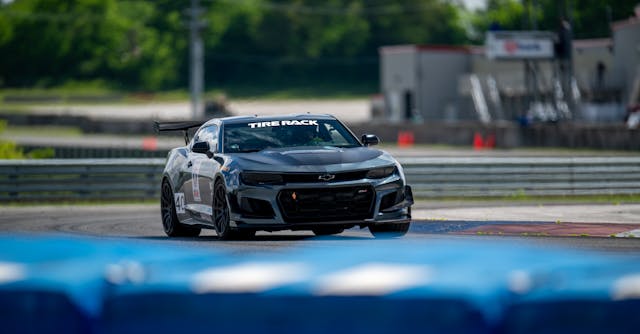
Another factor is that competitors are presented with a list of 200-treadwear tires available from Tire Rack: This year, there were 13 brands. Teams choose the tires they want, and you must run those four tires for the entire event. Schuh and Chen picked Continentals, which Schuh said are great in the rain, because past One Laps tended to be wet. This year was surprisingly dry, but the Continentals did their job on that wet skid pad event that Schuh won.

For Tom Suddard, the publisher of Grassroots Racing and Classic Motorsports magazines in Holly Hill, Florida, this was his fourth One Lap. While Grassroots is a presenting sponsor, Suddard uses the event to thoroughly test a car, and this year, it was a 2025 Hyundai Ioniq 5 N, entered in the Alternative Fuel class, with that fuel being, of course, electricity. The 5 N is the performance version of the Ioniq, and is capable of up to 641 horsepower.
But isn’t he taking a chance, with so much time spent hurrying from point to point, that they wouldn’t be able to find a charger when they needed one? No, Suddard says; he’s done this before, and “This is the first time, honestly, where every charger worked—we didn’t have any issues, didn’t have to go out of our way—and it really didn’t slow us down. We were getting to the hotels about the same time as the gas cars.”
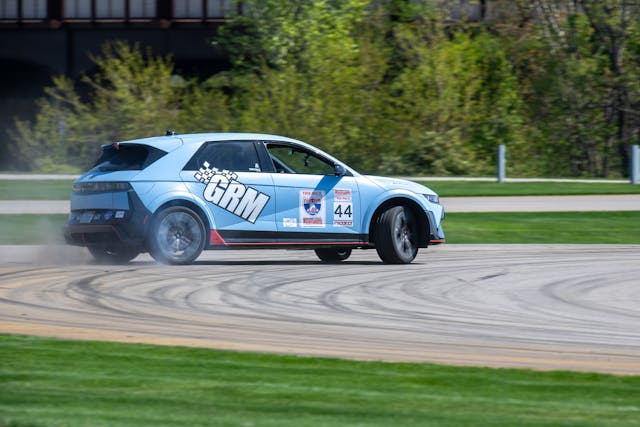
Performance, he says, was “Pretty stunning. It’s still a 5000-pound SUV, and the laws of physics still apply, but it was super durable. We could run it as hard as we wanted on track without worrying about the charge. It didn’t slow down as the battery reserve was used up; in fact, we ran one of our best laps at VIR with the car at the lowest charge level of the whole trip.”
Suddard keeps coming back, he says, “Because I really enjoy the challenge. I love the challenge of learning a course that nobody’s ever seen before, having to do it quickly, then having to race on it right away. That’s what really draws me to it, and the fact that it’s a week long, and so many transit miles, the physical and mental aspect of performing not just one day, but for a week straight.”
And then there’s the people. “You see some of the same people over and over again, every time, and it’s like a big family that comes together for the event. People you haven’t talked to in a year, you’re right back at the dinner table with them, telling stories, having a blast.”
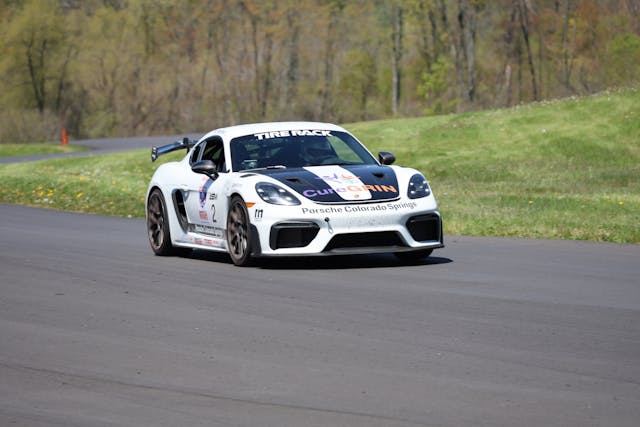
This is a good place to mention the overall winners of the 2025 Tire Rack One Lap of America Presented by Grassroots Motorsports: It was team number 2, Salil Shukla and Christopher Mayfield, driving a white 2024 Porsche Cayman. Certainly not the most powerful entry in the field, but obviously a versatile and well-driven car. Worth noting is that an electric car, a 2021 Tesla Model S, finished second overall.
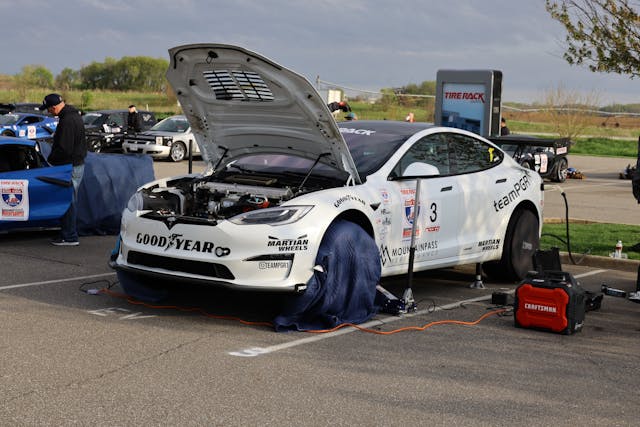
The car count, vehicular variety, and camaraderie are music to the ears of Brock Yates, Jr. He’s already working on the route for the 2026 edition of One Lap of America—it’s different every year. For the event itself: “Basically, I’m the nanny,” Yates says. Herding 83 cars from place to place, making sure they all get the track time they were promised, supervising the track workers, who are typically different from one track to the next; yeah, it’s work. “But I’m still having fun,” he says.

Yates says one of the hardest parts of the job is booking racetrack time. Not that long ago, “Racetracks were sallow for most of the year,” he says, and they were eager to book One Lap. Now, most of the good ones are busy—“If I don’t get all my requests for track time in by August for the next year, I’m out of luck.” Part of that, he believes, is due to One Lap’s tradition of introducing new drivers to racetracks, driving their street cars—track days, they call it now.
Arguably, he says, it began in 1989, when One Lap descended on the Hallett Motor Racing Circuit in Oklahoma. Then, the Sports Car Club of America sanctioned One Lap, and their rules were a little too restrictive for Brock Sr., and Hallett’s owner, the aforementioned racer and One Lap veteran Anatoly Arutunoff, so rather than run a slalom course on the front straight, they basically turned the cars loose on the track, one at a time like always, and you could go as fast as you were able. “We learned that street cars could actually run on racetracks and not spontaneously combust. Out of that came TrackTime, Car Guys, and a bunch of other racing schools. After we ran Hallett, it opened up a whole new industry,” Yates says.

Every year, Yates says, the quality of cars entered increases, but he worries about the amount of horsepower presently available to inexperienced drivers. Those cars often have manual transmissions, but few of the new drivers, he says, can heel-and-toe, which is where the driver brakes with their right toes while flipping the throttle with their right heel, enabling the engine’s rpms to match the lower gear on the downshift. Yates Jr., as a kid, used to marvel at his father’s ability to heel-and-toe, “and I taught myself to do it by practicing for hours on a Morris Minor that didn’t run. I was learning smoothness, and gentle downshifts.”
Now, he says, “People show up at racetracks with, say, a Mustang Shelby GT350 and tell me, ‘Teach me how to drive this stupid thing.’ Without a clue, without a background, without reading any books on driving. That’s what I’m contending with. We’ve always had the two-driving-schools minimum, but most of them can’t heel-and-toe—they’d rather use those little paddley things behind the steering wheel. They’re not prepared when they overstep the machine’s limits.”
“I’m not touting the fact that I’m a great driver, because I’m certainly not. Middling, at best. But I’ve been able to save myself and get out of some really stupid situations.” With so many new performance cars, Yates says, “You are removed from the driver’s seat. You are insulated. Desensitized.” Sometimes when Junior talks, I hear Brock Senior.
“I worry for the sport, I guess. I’m an old fart, and I admit it. But there’s a lot to be said for old school. For analog. That’s my rant for the week.”
If worrying keeps Junior motivated to run successful One Laps year after year, we’re all for it—bringing out the Pobsts and the Bentleys of the racing world and attracting weekend hotshoes like Schuh will help keep motorsports—and Cannon Ball Baker’s legacy—alive. Farts of any age with interest in the 2026 One Lap of America are welcome to keep an eye on the official website, and Facebook, for information about the 42nd One Lap of America. If you’d like to compete, sign up early: There’s typically a long waiting list.
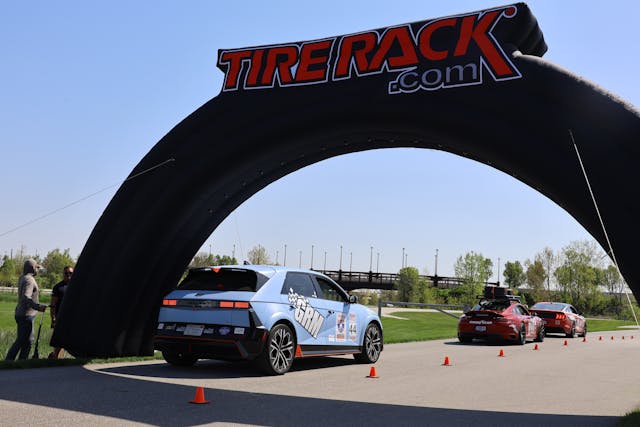
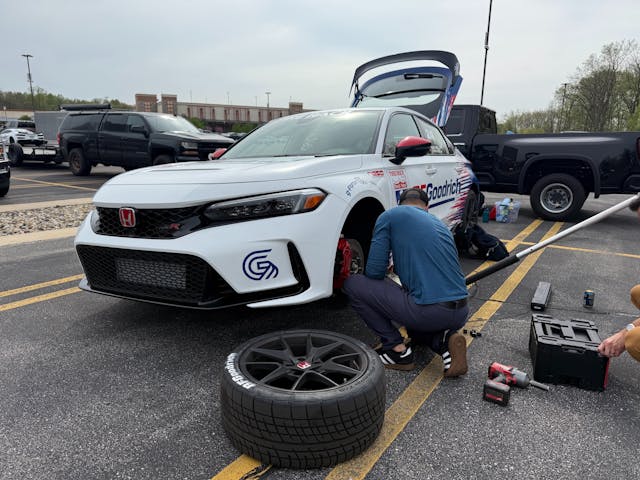
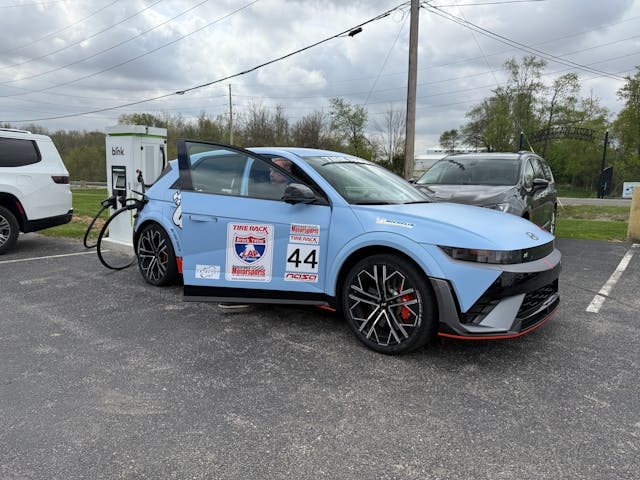


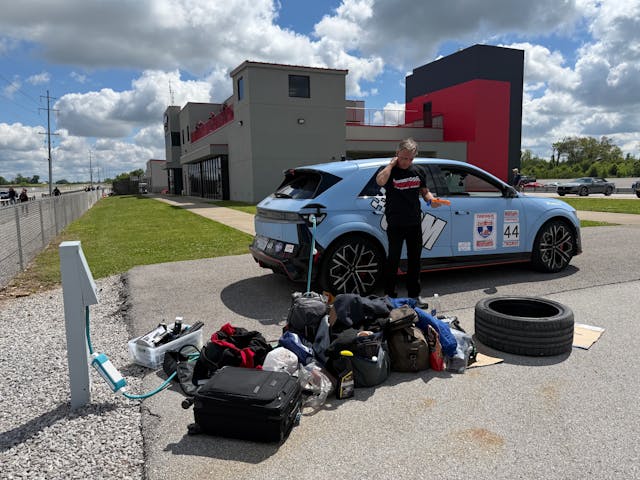





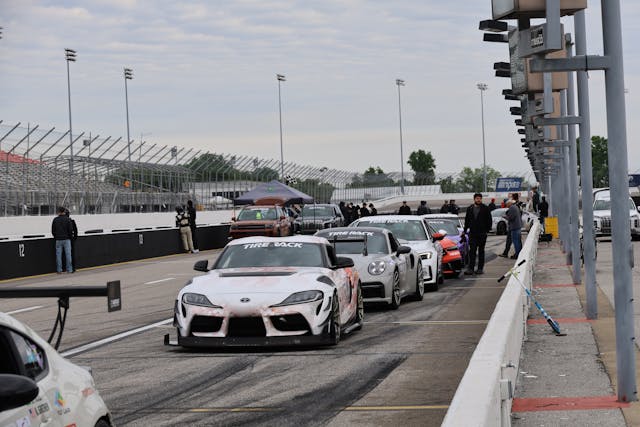

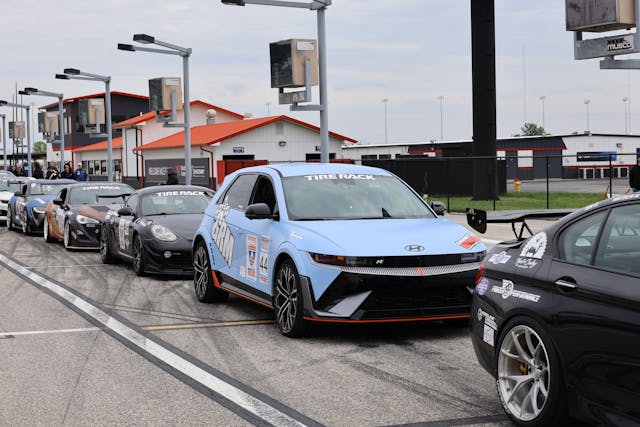
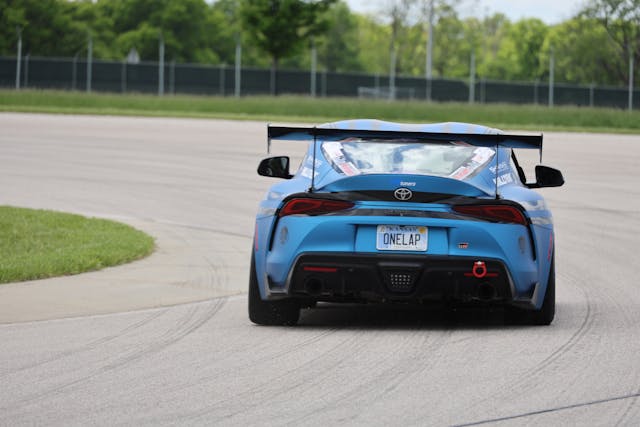
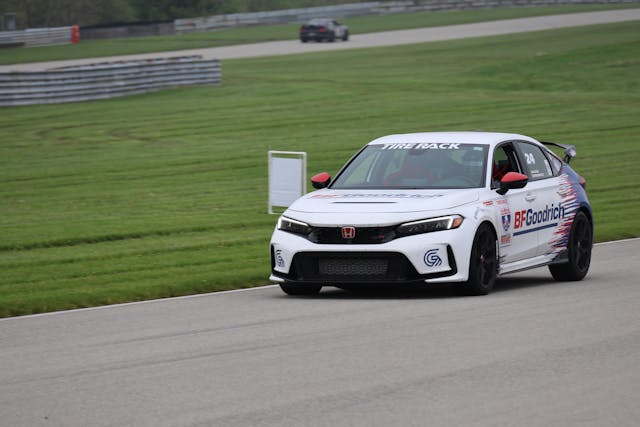


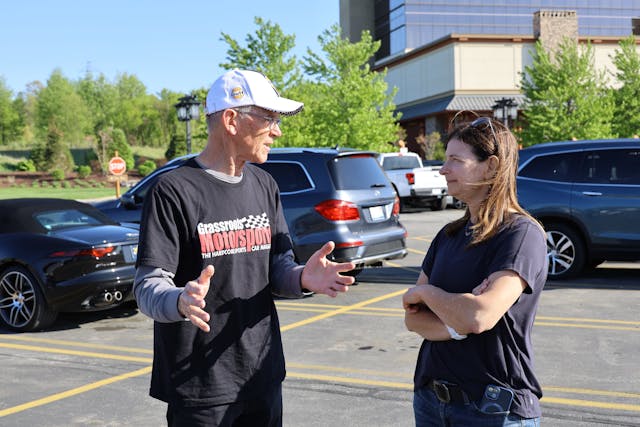
-

 Sports3 weeks ago
Sports3 weeks ago2025 NCAA softball bracket: Women’s College World Series scores, schedule
-

 College Sports1 week ago
College Sports1 week agoPortal Update – Basketball and Gymnastics Take Hits
-
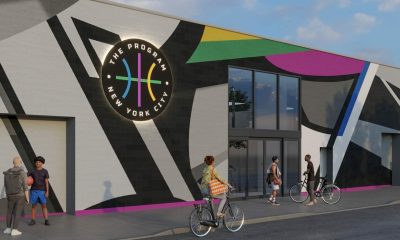
 Rec Sports2 weeks ago
Rec Sports2 weeks agoThe Program, a New Basketball Training Facility, Opening in Greenpoint This September
-

 College Sports3 weeks ago
College Sports3 weeks agoNew restaurant to open in State College | Lifestyle
-
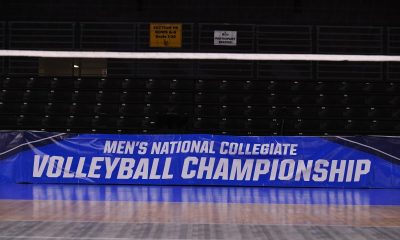
 Sports3 weeks ago
Sports3 weeks ago2025 NCAA men’s volleyball championship: Bracket, schedule, scores
-
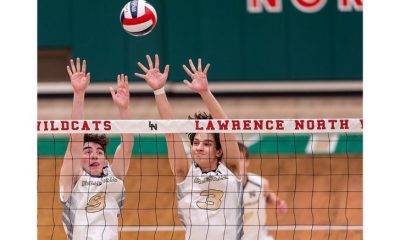
 Sports3 weeks ago
Sports3 weeks agoBoys volleyball: Millers sweep Lawrence North
-
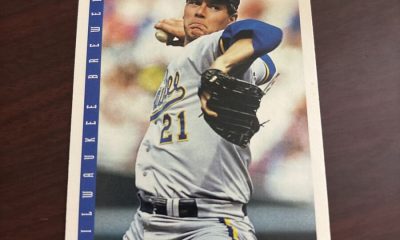
 Sports3 weeks ago
Sports3 weeks agoMajor League Baseball results
-
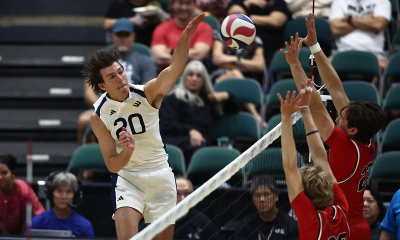
 Sports3 weeks ago
Sports3 weeks agoHilir Henno of UC Irvine Receives AVCA Distinction of Excellence Award
-
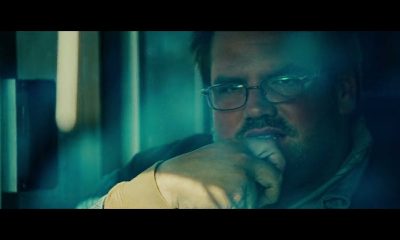
 Sports3 weeks ago
Sports3 weeks agoWork out, don't run out
-
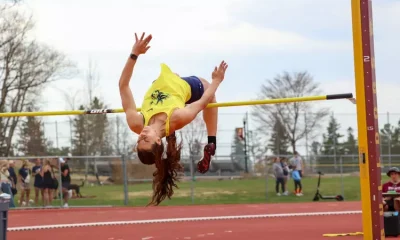
 Sports3 weeks ago
Sports3 weeks agoGreenwaldt and Sallee Take NSIC Titles in Day Two

































